Choquequirao
Also known as Machu Picchu’s sister.
It’s a unique trekking, one of 25 world’s best destinations to visit in 2023.
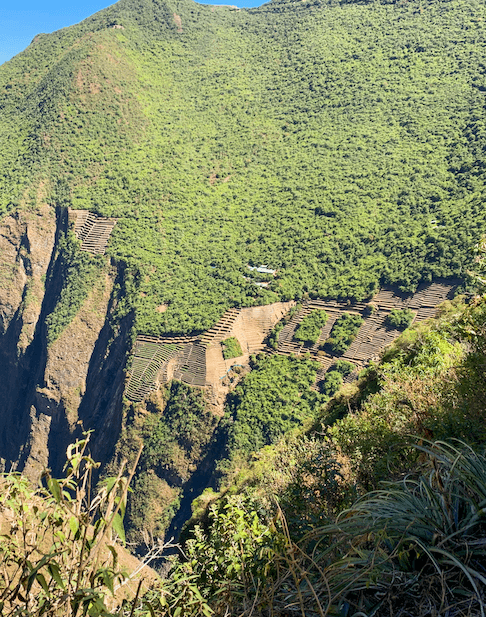
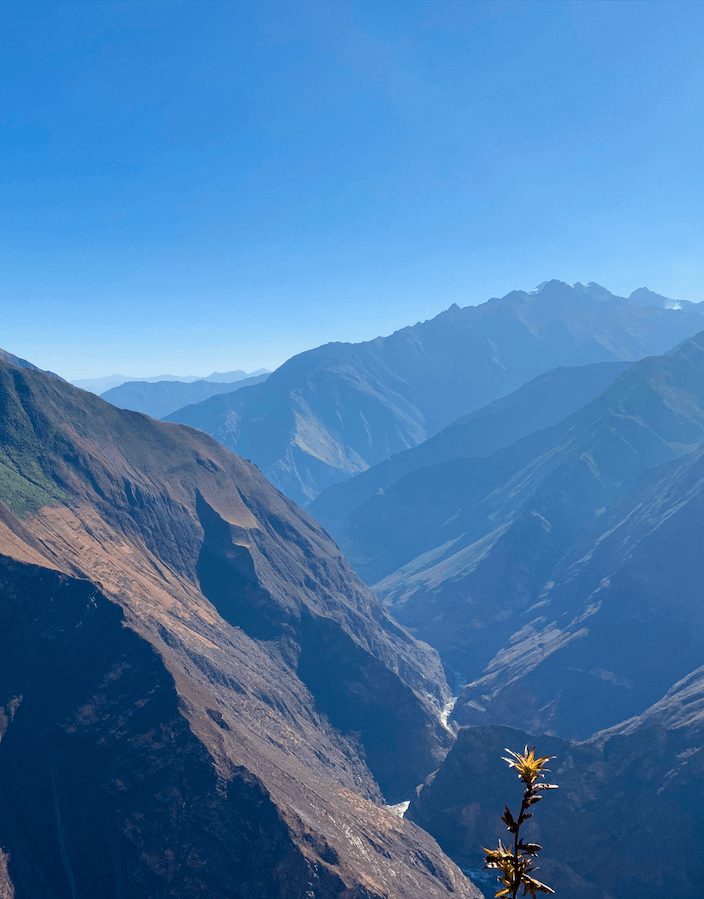
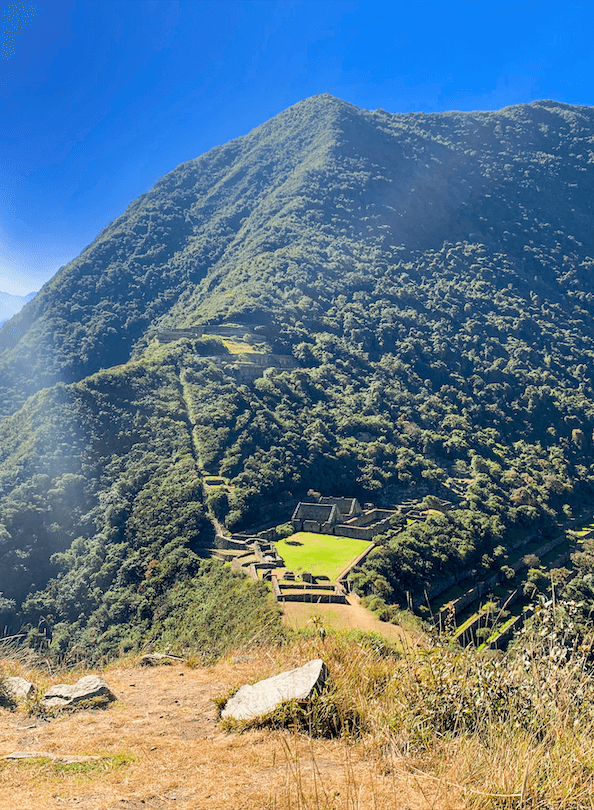
Ranked by National Geographic’s annual list.
If you want to feel yourself like an authentic and adventurous explorer avoiding crowds you should consider this option.
In this ultimate guide to Choquequirao, you will find everything you need to know, how to get there, trekking information, recommendations, prices and some useful local tips.
Unlike its sister Machu Picchu, Choquequirao is a much more quieter experience. It only receives 20 visitors per day and Machu Picchu has a maximum capacity of 4044 visitors each day. Why the difference is huge? The only way to arrive to Choquequirao is walking, 2 days for going and 2 for coming back. There is a project a long time ago (since 2013) to build a cable car to Choquequirao, so the government can replicate the massive tourism of Machu Picchu.
The cable car doesn’t have a start date yet, but it’s on negotiations. So, it is better to go there as soon as you can before a horde of tourists arrive.
Choquequirao meaning
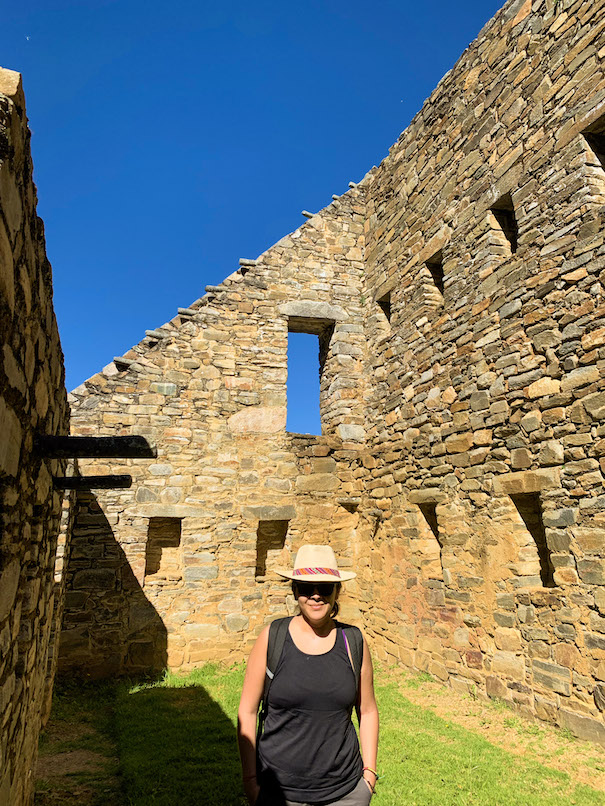
Choquequirao, translated as “cradle of gold” in Peru’s Indigenous Quechua language.
Built in the late 15th century by Incas, and expanded over the next century Choquequirao is believed to have served as an administrative hub for the region, as well as providing a local military centre.
Choquequirao is believed to be at least three times larger than Machu Picchu. Currently, it is estimated that only 30% of Choquequirao is exposed to the visit the rest is covered in vegetation.
This archaeological site has many things in common with Machu Picchu such as its strategic location, Inca terraces, temples and a main square.
If you want to know how to get to Machu Picchu, check this article.
Who discovered Choquequirao?
Some people knew the existence of Choquequirao before the American explorer Hiram Bingham (the discoverer of Machu Picchu) arrived in 1909 who was looking for the Inca treasure.
Its importance has only recently been recognized since it’s offered as a replacement of the traditional Inca Trail that needs to be scheduled 6 months before.
Best time to go to Choquequirao
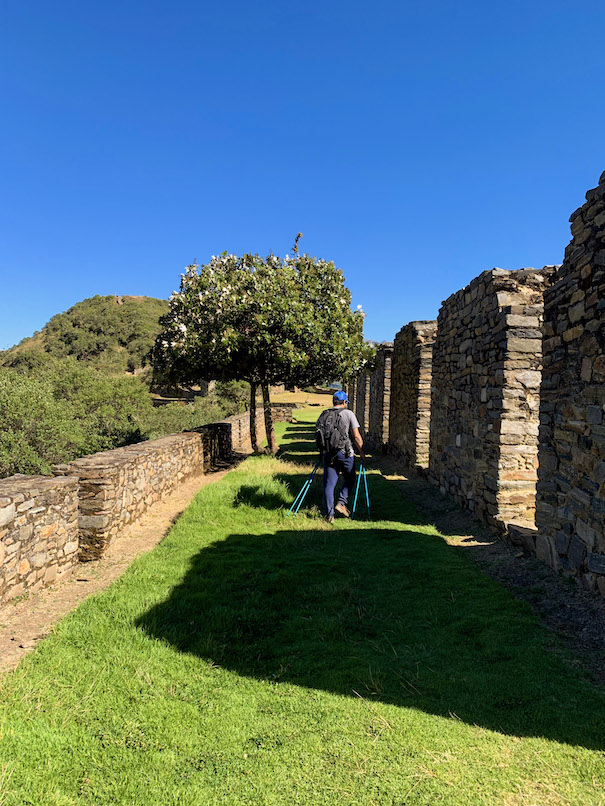
The best time to travel is between May to September. Choquequirao (and actually all Mountain area in Peru) has two stations:
- Rainy season (from October to April): it is characterized by frequent fluvial rainfall. The sun is not so intense but the rain can harm the walk.
- Dry season (from May to September): it is characterized by the lower frequency of rains. The days are hotter and the nights are colder. Even if you are coming on the dry season, you should bring a rain proof jacket, weather in the Andes can be changeable.
If you want to know about the weather in other regions of Peru, check this article to know Best time to go to Peru.
Getting to Choquequirao
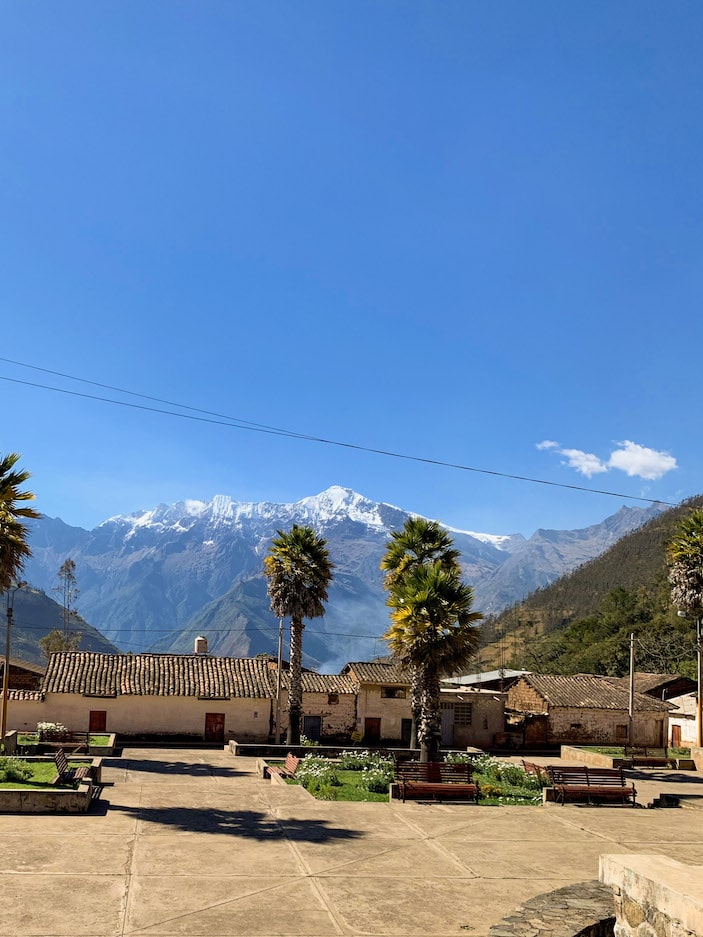
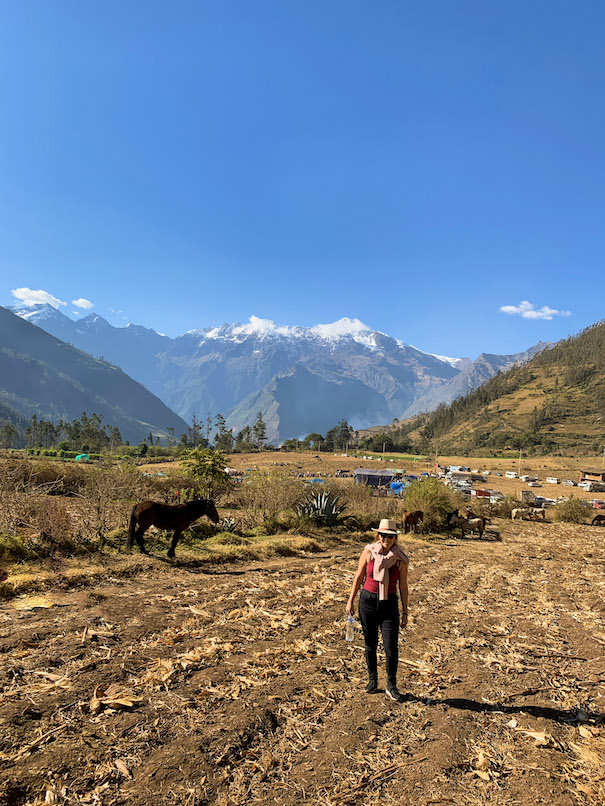
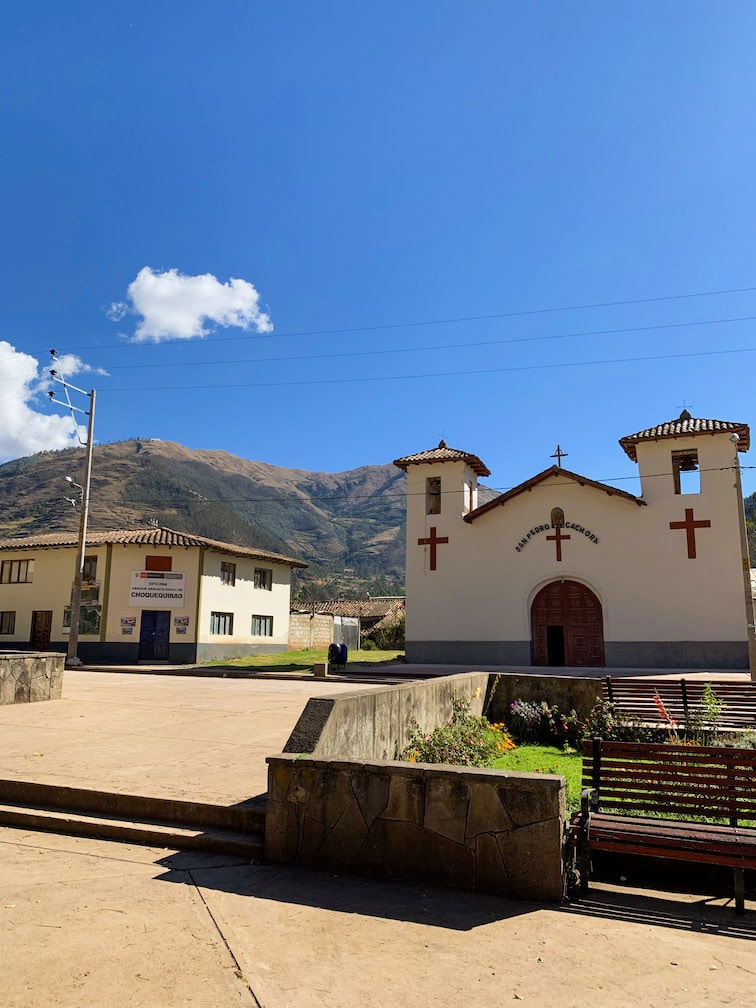
The most common way to get to Choquequirao is through San Pedro de Cachora or simply also known as “Cachora”. In Peru we really love to make names shorter.
Cachora is a small village 165km from Cusco, 5 hours away. So, it’s better to go out between 5-6 am.
By public transportation
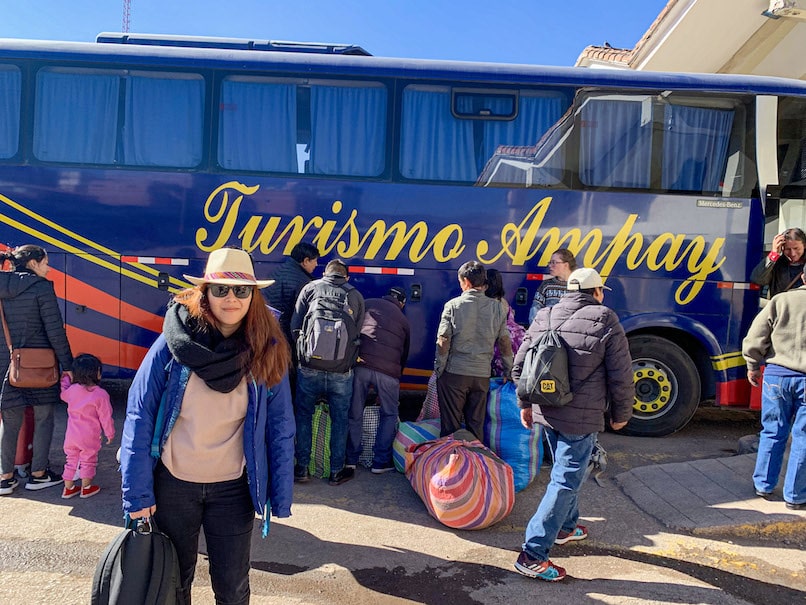
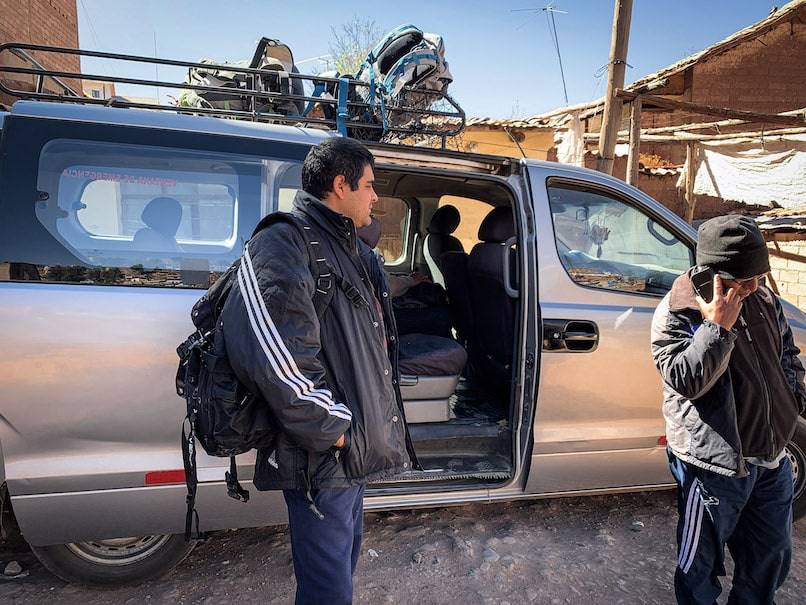
- From Terminal terrestre in Cusco take a bus towards Abancay (40 Soles/US$12), ask to stop at the turn to Cachora (desvío a Cachora) which is in “kilómetro 154”.
2. Then you have to take a shared minibus (combi) to Cachora, for 5 soles/US$1.5 pp.
3. From Cachora you have to go to El mirador de Capuliyoc. You can start the trek right away or you can take a taxi to the starting point. If you decide to walk, you should know is 7 Km/ 4.3 miles, around 2.5-3 horas more.
In my case, I hired a tour to Choquequirao that also has a hotel, so I left Cusco at 8 am with no rush. I arrived to Cachora at 2 pm and I stayed there overnight. I stayed at Inka dream choquequirao, a double room cost S/116- USD$ 31 per night.
Go to Choquequirao with a tour or not?
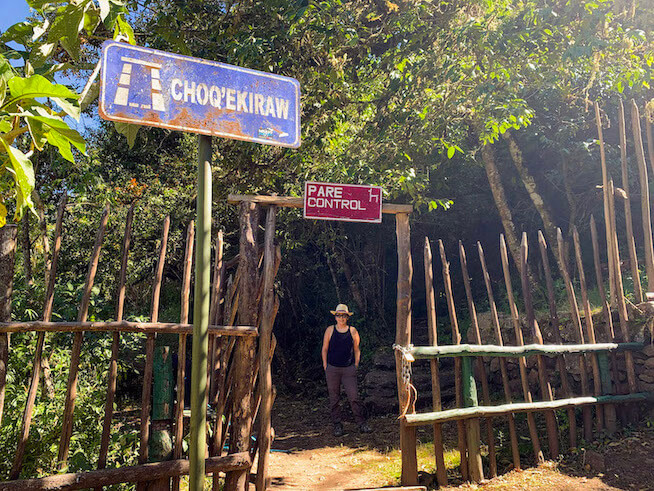
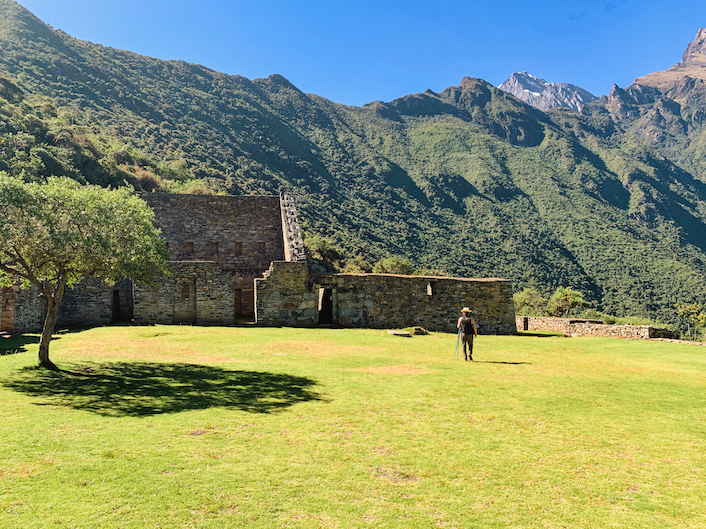
Well, that depends on what type of hiker you are. If you are an experienced hiker, it wouldn´t be an issue for you to carry your own stuff. Besides, the path is well signed.
If you not used to hike with a heavy backpack, I would say this is not a good moment to start. The trekking is hard, so it would be better for you to hire a tour.
What includes a tour?
It usually includes transfers from Cusco, muleteers, lunches, dinners and the entrance tickets for Choquequirao, tents and sleeping bags. So, you don’t have to pay for anything extra. In any case, make sure and ask the agency what is included.
Tours starts at US $450 pp (4 days), then as everything in Peru you can find a wide range of prices. I even saw some agency tour charging US $1200 pp for 2 people.
Keep in mind, you can negotiate prices in Peru but that will be more effective if you speak some Spanish, if not it’s unlikely you will get a big discount, but at least you can try right?
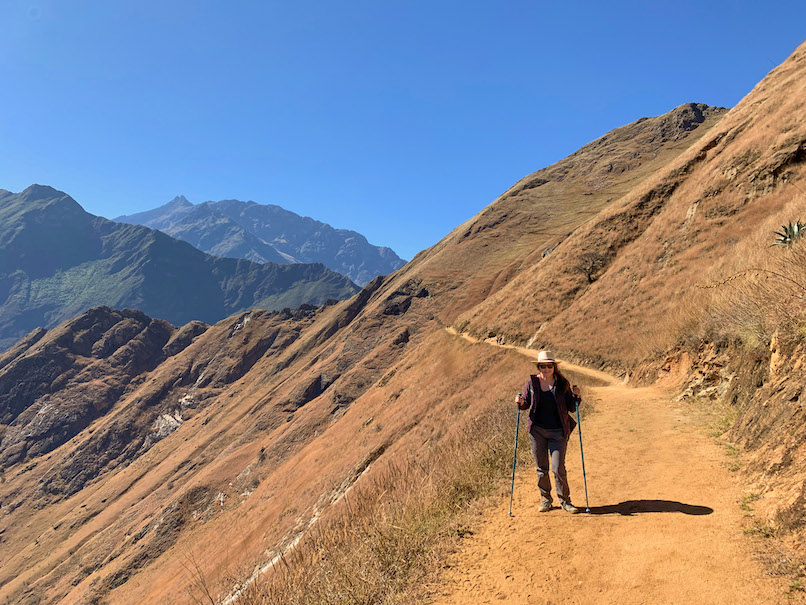
Altitude Sickness
Choquequirao is at 3033m/ 9950 ft, Machu Picchu is a little lower 2430m/ 7972 ft.
Since you will do a trekking for 4-5 days, I strongly recommend to be at least 3 days in The Andes. In my case, since I get really sick every time I go to the Mountains, I need minimum 4 days. So, it really depends on how your body reacts.
It is a really good idea to visit first Cusco which is higher 3,400 meter above sea level (11,154 ft) and then go to Choquequirao.
Check this article for a complete High Altitude Acclimatization tips.
MY CHOQUEQUIRAO trekking EXPERIENCE
As I always said, please note the estimate times I’m giving are relative, the main goal is you to have an idea of how long lasts the trekking. To be honest, you should know I walk very slow. So, if you have a good pace, you will do it much quicker than me.
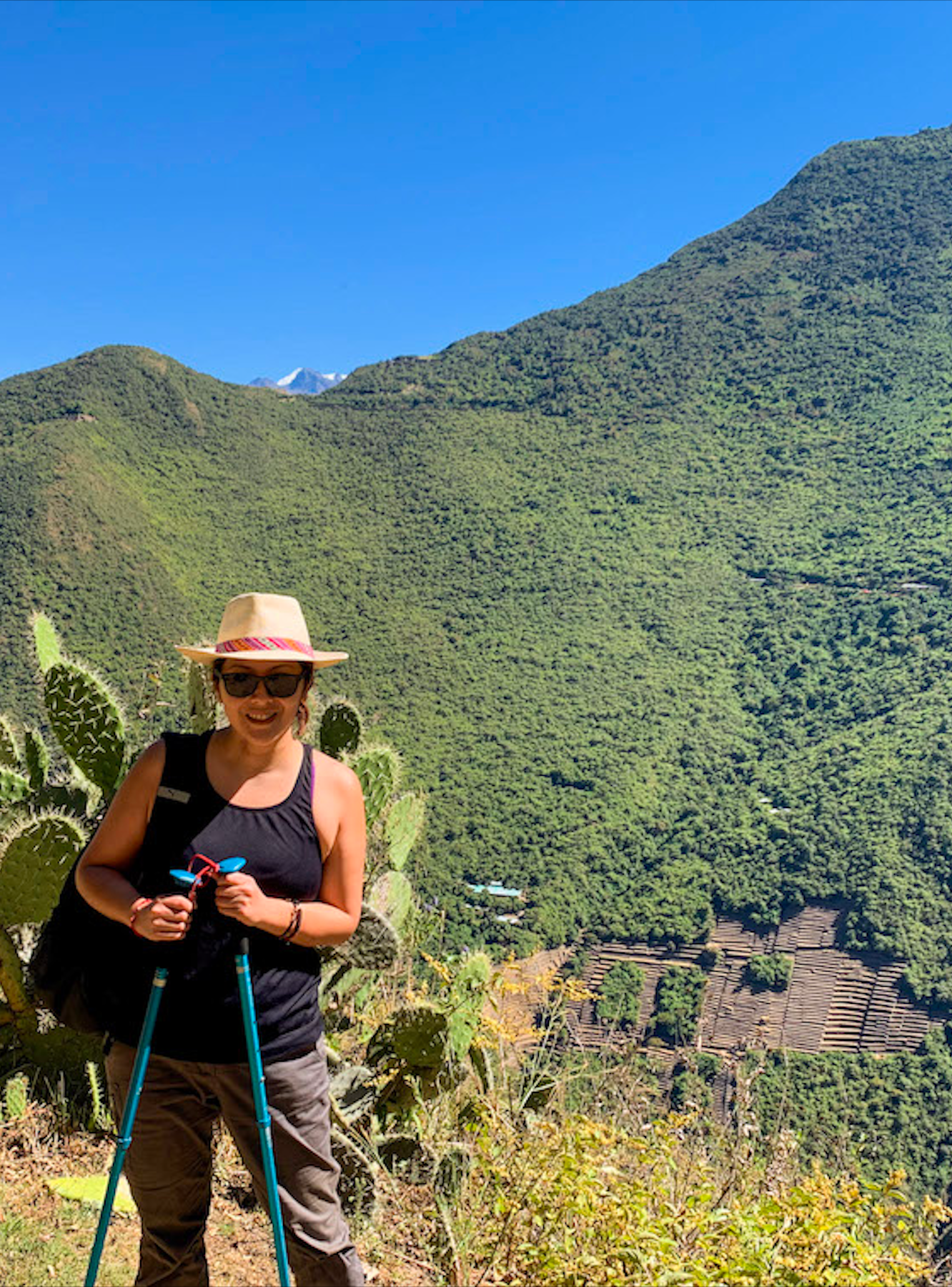
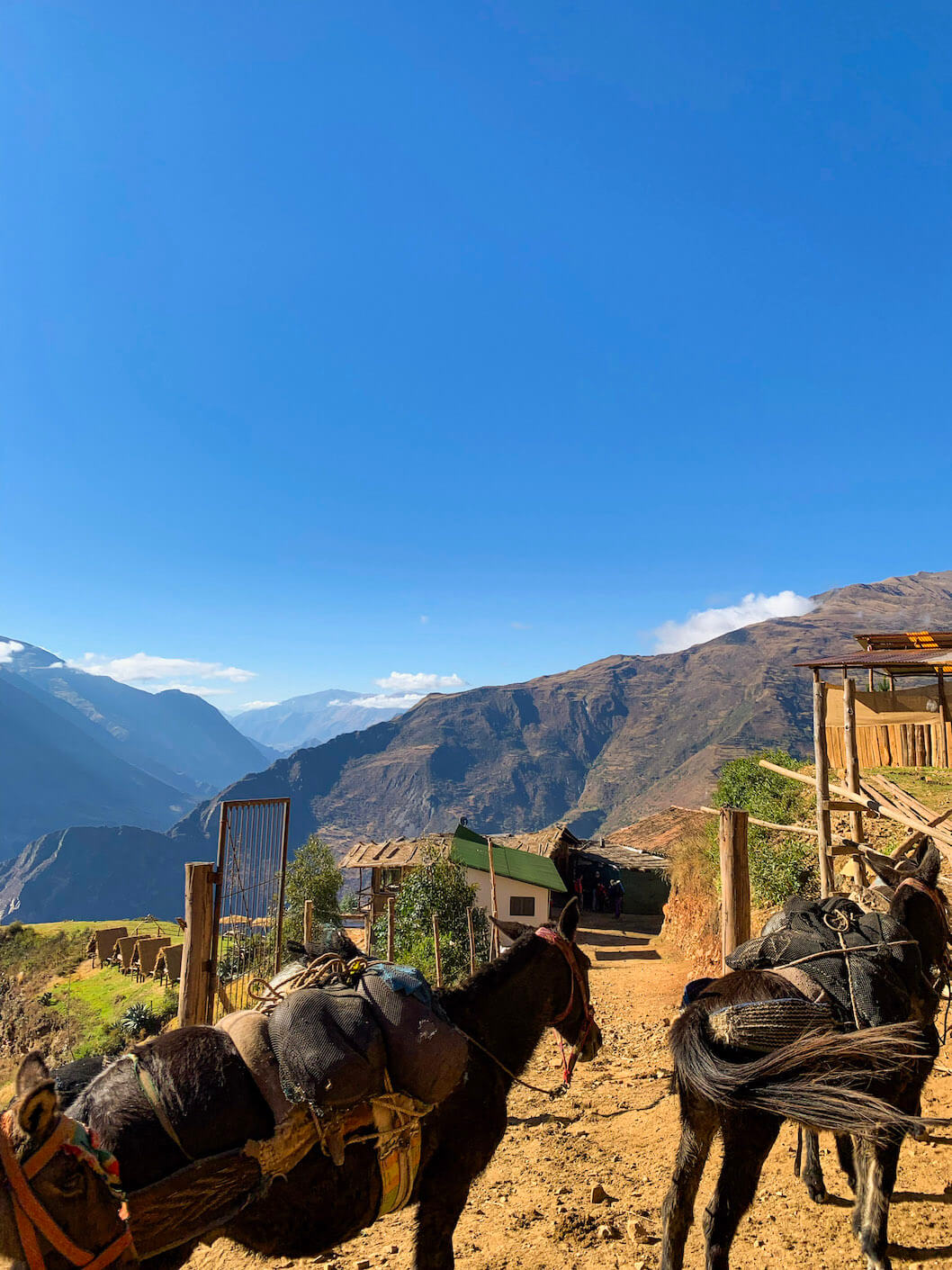
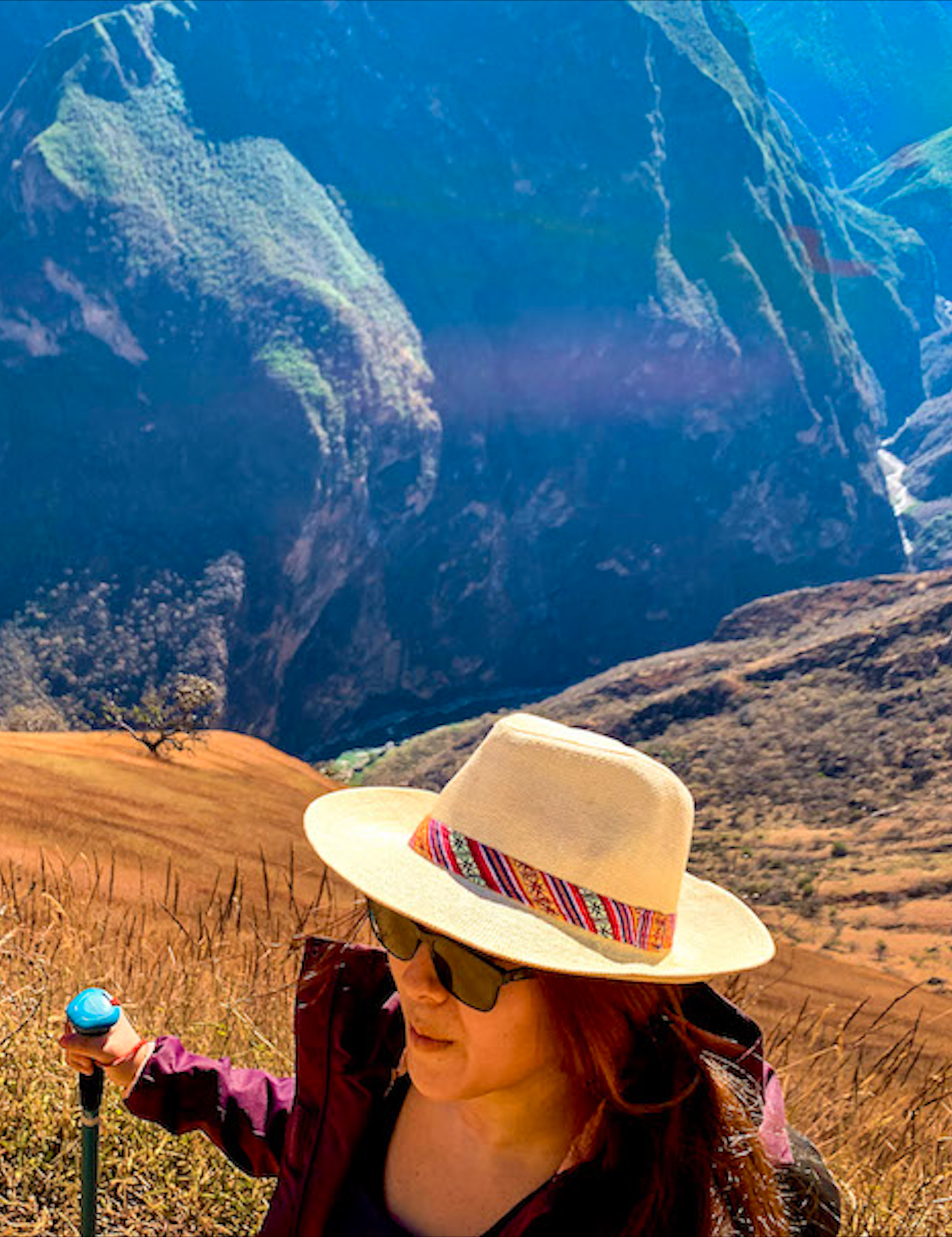
DAY 1
Capuliyoc (2900m/9514 ft) to Santa Rosa Baja (2100 m/6890 ft).
Distance 12 Km/7.4 miles. Estimated time: 7 hours.
In this point, I got the muleteers. If you are lucky you will see Condors here, they are often seen in this area. Beyond Capuliyoc (2900m/9514 ft), the trail begins to descend towards the river Apurimac. I strongly recommend to have trekking poles, since you will walk near to a cliff’s edge.
After 3 hours, 7 KM/4.3 miles you will pass the campsite “Chiquisca” (1800m/5905 ft). Then if you keep the steep descent, you will arrive to the lowest point in the trek Playa Rosalina (1550m/5085 ft) which is 2 KM/1.2 miles away. It took me 1 hour to arrive to Playa Rosalina from Chiquisca.
You can camp here but I really recommend to go further, if you are in good shape. Playa Rosalina has a lot of mosquitos, since the Apurimac River is just there.
After this point you will have to ascent all the way until Choquequirao, so prepare yourself!
Santa Rosa baja (1850m/ 6069 ft) is the first campsite you will find after the ascent of 3 KM/1.8 miles. It is open only in high season (May- September). If you didn’t hire a tour, you have to ask permission for camp here and pay a fee (between 5-10 soles/ USD 1.30- 2.60).
If you started the trekking from Cachora you have to add 7KM/ 4.3 miles until this point.

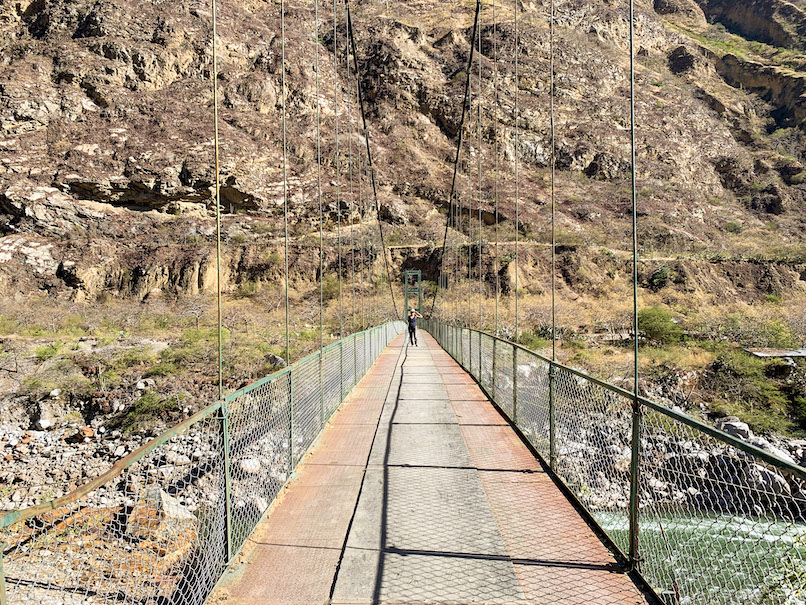
Day 2
Santa Rosa Baja (1850m/ 6069ft) to Choquequirao (3033m/ 9950 ft).
Distance 8 Km/4.9 miles. Estimated time: 6.5 hours.
From Santa Rosa Baja to Santa Rosa Alta is only 1 KM/0.6 miles but the climb is quite steep which it makes it really difficult, plus you have your legs already tired from the day before. Even so, if you have the energy, I recommend you to go forward and arrive to Santa Rosa Alta the first day. As long as you can go farther the first day, you will have more time at the ruins. The complex is really big, you need at least one full day to explore it.
Again, that depends on your physical condition, in my case if would do Choquequirao trekking again, I will choose to do it in 5 days. So, I can have an entire day to chill at the ruins. But again, that is a really personal choice.
It took me 2 hours to make it to Santa Rosa Alta is at (1950m/6397 ft). I met a couple from Basque Country that made it in 30 min! So, please let me know if anyone of you can made it even quicker than that!
You keep ascent for 3 Km/ 1.8 miles and you will reach the top, Marampata (2,913m/9557 ft), a small town that overlooks the canyon. I made it in 3 hours. I settled here and after a short break, I kept walking to the ruins. Your legs will appreciate the easy path from here.
Choquequirao is only 4 Km/2.4 miles away which means 1.5 hrs.
The only thing that I really regret is to have a short time at
Choquequirao complex (only 1 hour). I left Santa Rosa Baja at 7 am, I arrived to the ruins at 2.30 pm.
When I arrived there, we were just 4 people. Something really amazing for such an incredible place with stunning views of the valley and canyon. The ruins itself are well maintained, only about 30% has been excavated. If you already visited Machu Picchu, you will find its structure similar: buildings with steep roofs, terraces, and massive walls.

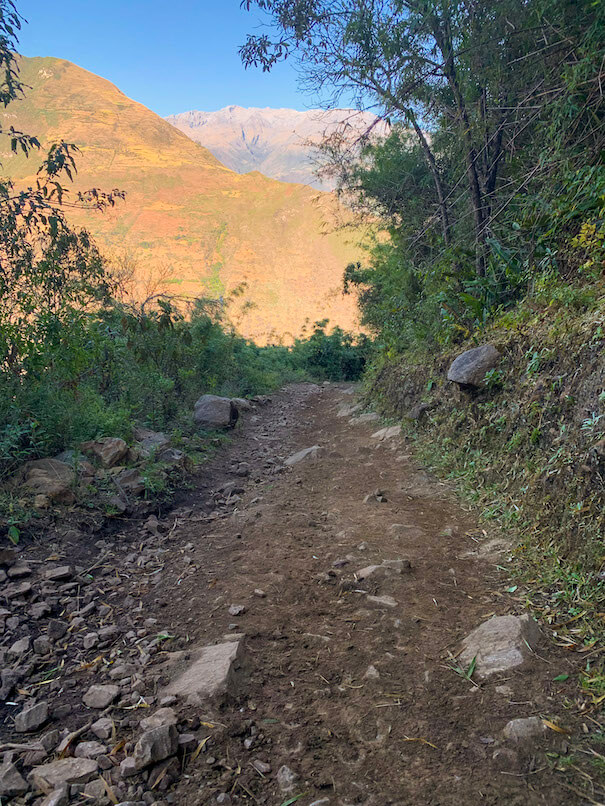
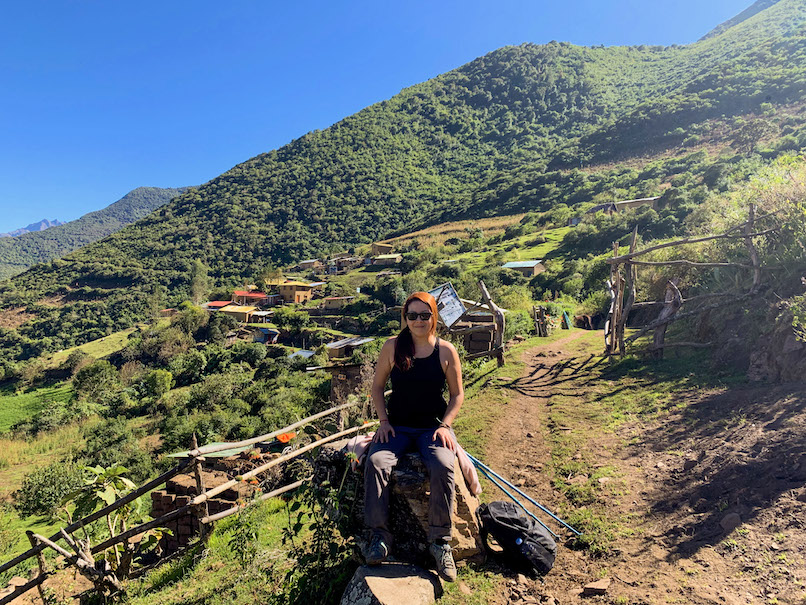
Day 3
Marampata (2,913m/ 9557ft) to Chiquisca (1800m/5905ft)
Distance: 13 km Estimated time: 8 hours
You have to go down all the ascend you did the day before, so there is no surprises here.
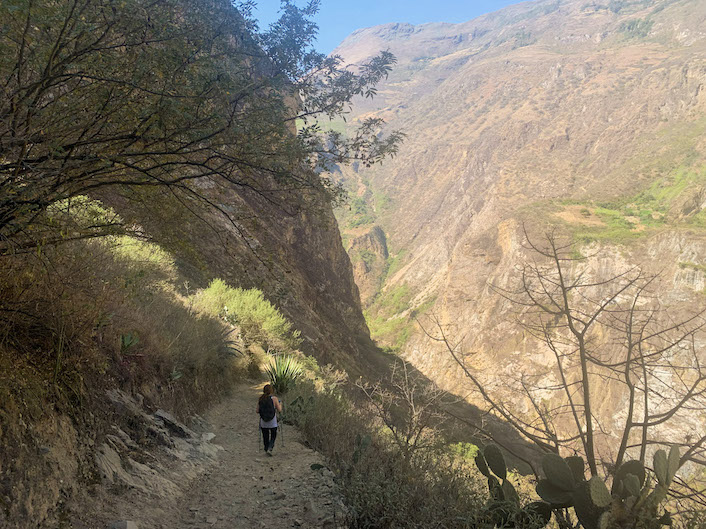
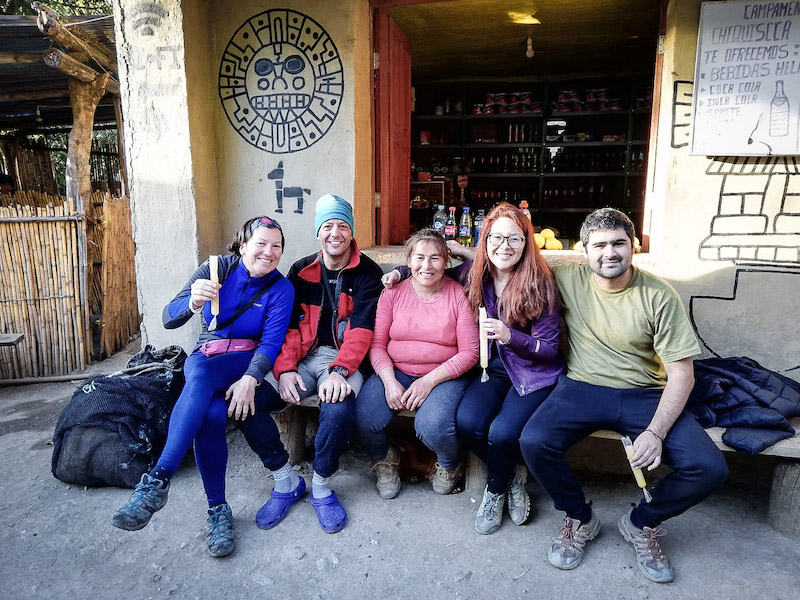
Day 4
Chiquisca (1800m/5905ft) to Mirador Capuliyoc (2900m/9514 ft)
Distance: 7km/4.3 miles. Estimated time: 5 hours.
This stretch doesn’t have any trees, so I decided to start the trekking at 5 am (in order to avoid the sun). It was quite dark but fortunately I brought flashlights.
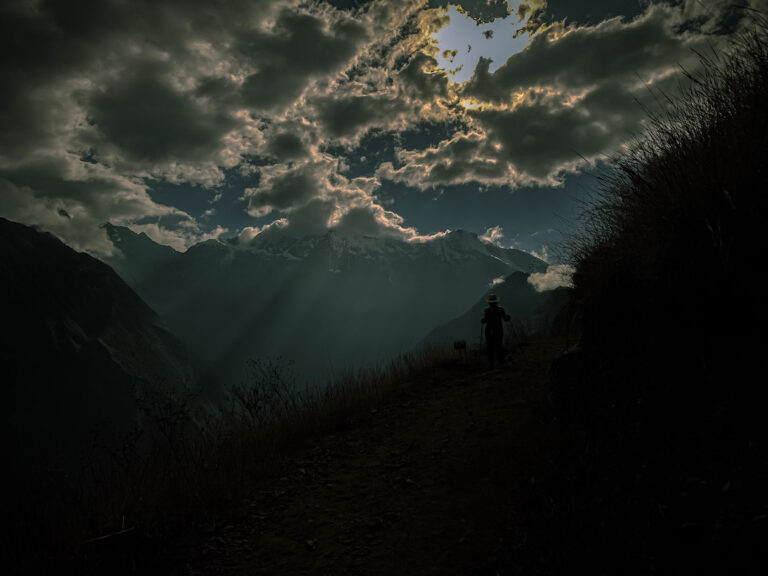
Choquequirao trekking details
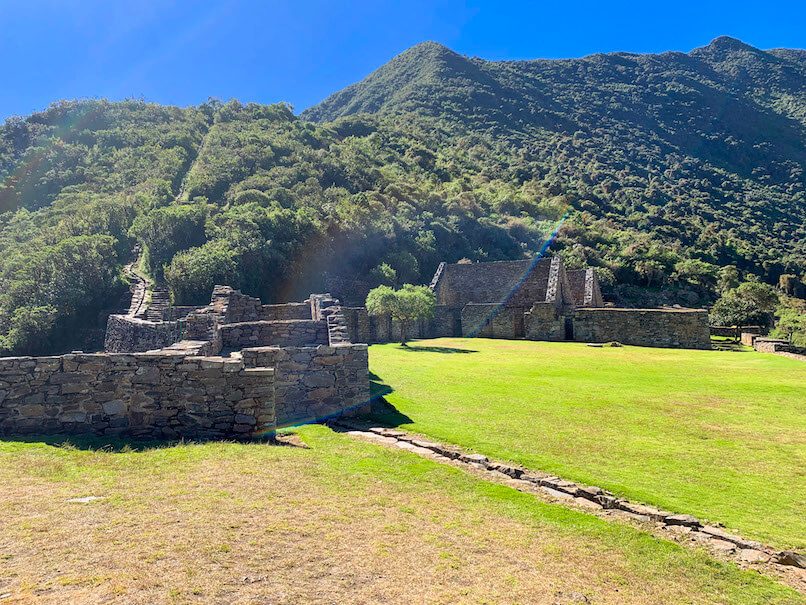
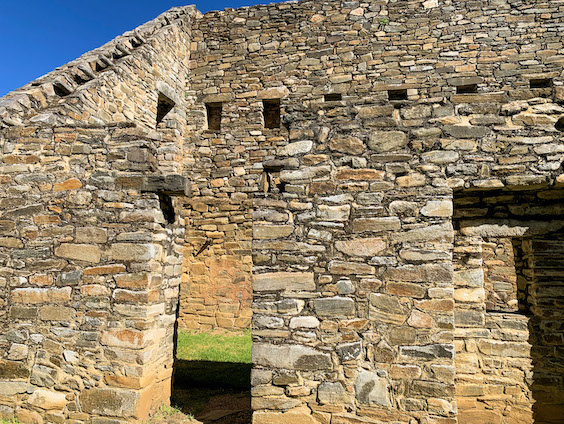
1.Total Hiking distance:
40 Km/24.8 miles
From the trailhead in Mirador Capuliyoc to Choquequirao round trip.
If you are walking from Cachora (and you are planning to come back the same way) you need to add 14Km/8.6 miles. The half is you change your mind and decide to take a taxi from Capuliyoc.
2. Duration:
It is hard to estimate hiking time in the altitude.
It depends on your own physical condition and this is very difficult to know. In any case, I will share estimated times:
– Mirador Capuliyoc to Santa Rosa Baja: 7 hours.
– Santa Rosa Baja to Choquequirao: 6.5 hours.
– Marampata to Chiquisca: 8 hours
– Chiquisca to Mirador Capuliyoc: 5 hours.
3. Difficulty: Hard.
4. Incline:
- Capuliyoc to Playa Rosalina -1600 m descent.
- Playa Rosalina to Santa Rosa Baja 550 m ascent.
- Santa Rosa Baja to Choquequirao 1000m ascent.
Choquequirao trekking costs
If you go on your own, you should consider the following costs:
- Transport– bus Cusco – Abancay – 40 Sol/US$12 (one way); minibus Abancay – Cachora – 5 Sol/US$1,5 (one way).
- Meals- Lunch/dinner– 15-18 Sol/ US$4- 5.
- Entrance fee– 60 Sol/US$18.
- Camp Site– 5-10 Sol/ US$ 1.30- 2.60 pp and for the night.
Recommendations
- Bring at least a SFP 50. For sensitive skins a higher protection will be better.
- Bring a Mosquito repellent.
- Bottled water or water purification tablets.
- If you are not going with a tour, you have to be self-sufficient and bring all the necessary gear with.
- A rain jacket even if you are going on dry season. It can rain a bit.
- Trekking poles would absolutely make your walk more secure and comfortable.
